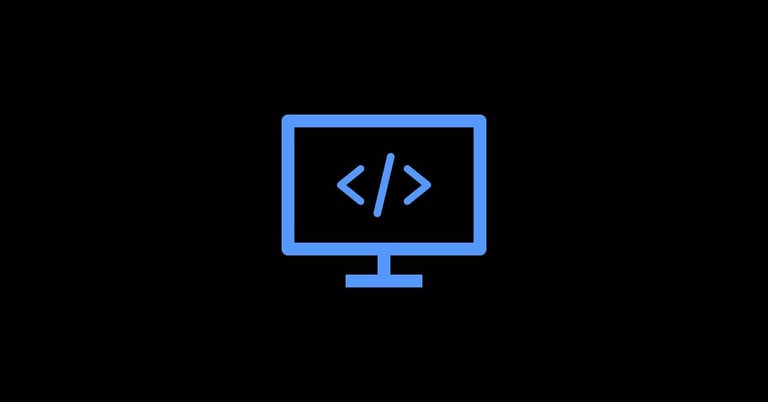11 Facts About Programming/Coding
Explore the roots, unique features, and untold secrets of the technology influencing our future as you delve into the interesting realm of programming/coding with these 11 amazing facts.
FACTS ABOUT


programming/coding (credit: apsce)
If programming/coding has ever made you think of somebody furiously tapping a keyboard as green numbers appear on the screen like The Matrix, then you are not entirely incorrect, though. However, it is also far more unexpected and fascinating. I have come to understand how unusual and interesting programming can be after spending three hours troubleshooting a missing semicolon (yes, really). There are many discoveries in coding that the majority of individuals are unaware of, such as languages that only incorporate emojis and programs that can write themselves. These eleven facts will offer you a new (and rather unbelievable) viewpoint on programming, regardless of your level of experience or level of curiosity about a program or code.
Programming/Coding in Binary is Rarely Done Directly: Programmers are not sitting about typing sequences of zeros and ones, regardless of how films portray. Mankind are unable to grasp the machine code, but computers can. On the contrary, we implement high-level programming languages similar to Python or JavaScript, which, on an unpleasant day, make coding appear more like English. It is possible for somebody to write in binary. However, it would be similar to utilizing smoke signals to write a novel.
Programming/Coding With Whitespace Exists: Yes, you read correctly. Whitespace is the term for it, and it totally disregards characters that are viewable. Only line breaks, tabs, and spaces are important. It is similar to creating poetry that is unseen and only your computer can read. Beneficial? Not at all. Funny? Of course.
Programming/Coding Bugs Predate Digital Computers: In 1947, engineers found that the Harvard Mark II computer had malfunctioned due to a moth being lodged in one of its relays. They labeled the moth a "bug" and taped it into the logbook. Absolutely, there has consistently been a practice of linking faulty code to bugs.
Programming/Coding Has a Turing Tarpit: Do you know what a Turing Tarpit is? Technically, this kind of programming language can accomplish whatever (just like any general-purpose language), however it is designed to be so simple that it is difficult to get started with. Brainf***, for instance. There is an explanation for why it has that name. It is a demonstration of complete masochism to write any words longer than "Hello World" in it.
Programming/Coding Can Be Done With Emojis: You are in good hands if you have ever thought your code could use extra 🍕 and 💩. Emojis make up the syntax of Emojicode, a true programming language. It is remarkably effective despite sounding confusing. What are the names of your functions? Emojis. Your variables? Emojis. Your mental state? Uncertain.
Programming/Coding Has Languages That Fit in Tweets: Yes, an entire program can be written in less than 280 characters. Code golfing, where the objective is to accomplish the maximum with a minimal amount of effort, is the reason behind languages like GolfScript and Piet, which resembles abstract painting. Can you read it? Not at all. However, it is strangely fulfilling, similar to solving a Rubik's cube while wearing a blindfold.
Programming/Coding Logic Inspired Games Like Tetris: Tetris originated from a programmer's interest with logic puzzles and was more than simply a lighthearted diversion throughout uninteresting lectures. It ended up being one of the most famous instances of coding and creativity coming together, and it was influenced by pentominoes, which are like flat Lego shapes. It is fascinating that so many of people overlooked their schoolwork because of a simple riddle.
Programming/Coding Can Cause "Heisenbugs": Have you ever experienced an issue that went away out of thin air the minute you attempted to demonstrate it to an individual? Heisenbugs are errors that, as soon as you try to debug them, disappear or behave differently. The bug appears to be aware of your presence. Unsettling? A little. Is it annoying? Beyond words.
Programming/Coding Supports "Duck Typing": Duck typing is a feature of dynamically typed languages like Python. In essence, it refers to that we treat an object similar to a duck irrespective of its true nature if it behaves like one (that is, if it has all the appropriate methods). Therefore, Python has no concern if a class you write behaves like a file or not. All it requires is for it to quack correctly.
Programming/Coding Has Self-Replicating Programs: A software that prints its own source code is called a quine. No cheats. Not even a file reading. It is uncompromisingly brilliant and completely self-aware, much like a software selfie. Although it has no practical value, writing one is a milestone for enthusiastic programmers.
Programming/Coding Languages Have Mascots: Cartoon mascots would seem unnecessary when dealing with something as significant as programming, however here we are:
Python? 🐍 A snake, of course.
Perl? 🐫 A camel.
Go? 🐹 A gopher who appears to consume excessive amounts of coffee.
It is strangely re-assuring. As if your code had an unusual buddy.
Summary: Compiling Curiosity
Remind yourself that programming/coding has always been strange if you are drowning in error messages or finding it difficult to figure out why your program cannot execute. Wonderfully, shamelessly strange. It goes beyond webpages and applications. Being curious, experimenting, and the unexpected bugs hooked in your machine are the foundations of this complete civilization. Avoid being scared to accept the inconsistency, regardless of how many lines of code you have to write. As a result, any serious programmer has had the notion, "Wait...can I write this in emojis?" at some point. (You can, really.)
